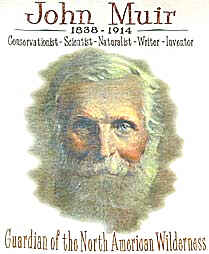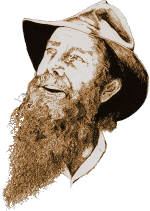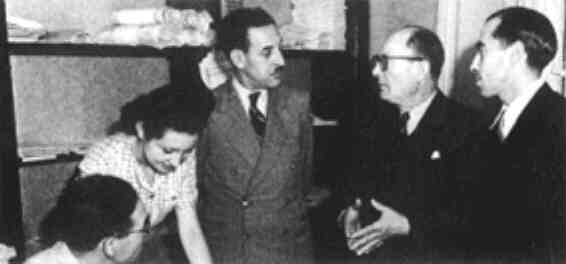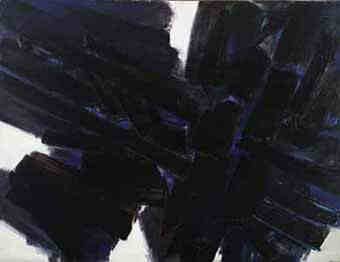1942 Jean
Darlan, French Admiral, assassinated
A
pro-Free French assassin in Algeria kills Jean Francois Darlan, French
admiral and collaborator in the Vichy government. He was 61. Born
on August 7, 1881, in Nerac, France, Darlan graduated from the French
naval academy in 1902, and advanced quickly through the ranks, reaching
the position of admiral of the fleet in June 1939. He was made commander
in chief of the French navy two months later.
Upon the surrender of France to the German invaders in June of 1940,
Darlan let it be known that he was inclined to sail the fleet to Great
Britain, to keep it out of German hands. British Prime Minister Winston
Churchill conceded, "…I would cheerfully crawl on my hands and knees
for a mile if by doing so I could get him to bring that fleet of his
into the circle of Allied forces. “
But it was not to happen. Darlan was quickly "bought off" by a power
position: He was made navy minister and then supreme commander of
all Vichy French military forces under Philippe Petain's government.
He became a collaborator with the German puppeteers (even passing
on to the Germans sensitive US military information that had landed
in the French embassy in Washington, D.C.), and, to add insult to
injury, ordering most of the French fleet to North Africa to avoid
Allied capture. (The Royal Navy at Oran would nevertheless attack
it shortly thereafter.)
In November
1942, when Anglo-American forces launched its North African campaign,
Operation Torch, Darlan was in Algiers, Algeria, visiting his seriously
ill son. General Dwight Eisenhower took advantage of Darlan's proximity
by ordering American diplomat Robert Murphy and Major General Mark
Clark to convince Darlan to aid the Allies in their invasion (Darlan
had hinted that he might switch his allegiance again in exchange for
heavy financial aid for France from the United States). Darlan vacillated,
in part because he still distrusted and disliked the British because
of the attack on his fleet at Oran, but in light of the German invasion
of France, which the Vichy government's concessions were supposed
to prevent, he eventually acquiesced. He ordered a Vichy-force ceasefire
to permit the Allied landings in North Africa to move forward unopposed.
Darlan finally signed an armistice with the Allies, folding his Vichy
forces into the Free French military.
Nevertheless, Darlan was never fully trusted by the Free French; he
was deemed too much of an opportunist. On Christmas Eve, 1942, he
is shot dead by Bonnier de la Chapelle, a Charles de Gaulle follower
who was training to be a British agent. Despite the help Darlan ultimately
provided, the Allies rejoiced. “Darlan's murder, however criminal,
relieved the Allies of their embarrassment at working with him," admitted
Churchill. |
1939
Day 25 of Winter War: USSR aggression against Finland. [Talvisodan
25. päivä]
More deaths due to Stalin's desire to grab Finnish territory.
Gulf of Finland: the Russian battleship Marat shells Koivisto
Fortress.
Ladoga Karelia: at Tolvajärvi the enemy is pushed back across
the River Aittojoki, where the front becomes stabilized for the
remainder of the war.
The enemy launches another offensive at Kollaa.
Northern Karelia: in the Inari-Lieksa sector the enemy is pushed
back across the border.
The war at sea: Finland mines the Soviet naval bases in the Baltic
States.
Northern Finland: Group Ilomäki advances from Jyrkänkoski to strike
at the Rasti crossroads in Kuhmo, but has to withdraw to its original
positions after 16 are killed and 37 wounded.
In Suomussalmi the enemy launches fierce counterattacks in the
parish village, at Hulkonniemi and also along the Raate road.
President Kyösti Kallio tours the military hospitals to greet
soldiers wounded at the front.
Swedish border: the first group of Finnish American volunteers
arrives in Tornio.
Abroad: in a speech at the Vatican, Pope Pius XII condemns the
Soviet attack on Finland. |
1933 Paris express train derails & kills 160, injures
300 (France).
 1838
John Muir, US naturalist, of pneumania, originator
of the Yosemite National Park, geologist, explorer, discoverer of
the Muir Glacier in Alaska, philosopher, artist, author.
^top^ 1838
John Muir, US naturalist, of pneumania, originator
of the Yosemite National Park, geologist, explorer, discoverer of
the Muir Glacier in Alaska, philosopher, artist, author.
^top^
John
Muir, a dedicated advocate for the protection of the US's wild
lands, was born in Dunbar, Scotland, on 21 April 1838. . When he was
still a boy, Muir's parents immigrated to the United States. He grew
up on a farm in central Wisconsin in the 1850s, a time when the region
was still a relatively wild western frontier. When he was 23, Muir
left the family farm and traveled around the Midwest working in a
variety of industrial jobs. A talented mechanic and inventor, he seemed
to be headed for a successful career in the rapidly expanding industrial
economy-but an accident changed Muir's direction in life. While working
in an Indianapolis factory for wagon parts, Muir's hand slipped, and
a file he was using cut the cornea of his left eye. Not long after,
his right eye also temporarily failed in a sympathetic reaction. Muir's
experience of being blind for several weeks led him to rethink his
life plans. When he recovered his sight, he abandoned his career as
a skilled mechanic and opted instead to embark on a 1600-km walking
tour of the US West.
[< at the bottom of this cover
were these words of Muir: “Brought
into right relationship with the wilderness, man would see that he
is not a separate entity endowed with a divine right to subdue his
fellow creatures and destroy the common heritage, but rather an integral
part of a harmonious whole.”]
During his western ramblings, the beautiful Sierra Nevada range in
California especially moved Muir. Drawing on the ideas of US transcendentalists
like Ralph Waldo Emerson and Henry David Thoreau, Muir argued that
wild nature offered a “window opening into heaven, a mirror reflecting
the Creator.” Muir developed a near-religious veneration for
the Sierra Nevada territory and a passionate desire to preserve the
wild state of the area. John Muir's struggle against the devestation
of the subalpine meadows surrounding Yosemite Valley resulted in the
creation of Yosemite
National Park on 01 October 1890. In 1892, he and several other
early preservationists formed the Sierra
Club. Muir served as the club president for 22 years, tirelessly
advocating the importance of preserving wilderness as a place where
thousands of “tired, nerve-shaken, over-civilized people”
could find spiritual and physical rejuvenation.
It is hard to overestimate Muir's influence in fostering modern concepts
of wilderness appreciation and protection. However, in practical terms,
Muir and the Sierra Club lost several of their battles to protect
the wilderness. From 1908 to 1913, Muir fought fervently against the
proposed construction of the Hetch
Hetchy dam in Yosemite National Park, which was being built to
provide a reservoir of water for the city of San Francisco. Muir railed
against his opponents, calling them “temple destroyers”
and “devotees of raging commercialism,” [did he call it
a “damn dam”?] but to no avail — the dam was built
and water covers the Hetch Hetchy Valley today. Deeply discouraged,
Muir died a year after the Hetch Hetchy defeat. The conservationist
ideas he proposed in books like Our National Parks, The Yosemite,
and some 150 articles, on the physiography of the Pacific Coast and
Alaska, natural history, and such, have become an accepted part of
mainstream US thought.
 —
MUIR ONLINE:
The Cruise of the Corwin (illustrated) —
Letters to a Friend — The
Mountains of California (1894, illustrated) — The
Mountains of California — My
First Summer in the Sierra (1911) — My
First Summer in the Sierra (illustrated) — Our
National Parks (1901) — Our
National Parks — Steep
Trails — Steep
Trails —
Stickeen, the Story of a Dog (1909) — The
Story of My Boyhood and Youth (1913, illustrated) — The
Story of My Boyhood and Youth —
Studies in the Sierra (illustrated) —
A Thousand-Mile Walk to the Gulf (illustrated) —
Travels in Alaska (illustrated) —
The Yosemite (1912, illustrated) —
MUIR ONLINE:
The Cruise of the Corwin (illustrated) —
Letters to a Friend — The
Mountains of California (1894, illustrated) — The
Mountains of California — My
First Summer in the Sierra (1911) — My
First Summer in the Sierra (illustrated) — Our
National Parks (1901) — Our
National Parks — Steep
Trails — Steep
Trails —
Stickeen, the Story of a Dog (1909) — The
Story of My Boyhood and Youth (1913, illustrated) — The
Story of My Boyhood and Youth —
Studies in the Sierra (illustrated) —
A Thousand-Mile Walk to the Gulf (illustrated) —
Travels in Alaska (illustrated) —
The Yosemite (1912, illustrated)
— Yosemite in art:
The first two by
Thomas Hill::
Bridal Veil Falls, Yosemite (1884, 183x241cm) — Grand
Canyon of the Sierras, Yosemite (1871)
//— the following by Albert
Bierstadt:: Bridal
Veil Falls, Yosemite (1873) — The
Domes of the Yosemite (1870) — Looking
Down the Yosemite Valley, California (1865) — Looking
Up the Yosemite Valley (1867, 91x149cm) — The
Merced River in Yosemite (1868) — Mirror
Lake, Yosemite Valley (1864, 55x76cm) — Sunrise,
Yosemite Valley — Sunset
in the Yosemite Valley (1868) — Valley
of the Yosemite (1864) — Yosemite
Falls (1870) — Yosemite
Valley (1866) |
1913:
60 children of Calumet strikers and 14 adults, crushed in stampede..
On the afternoon of Christmas
Eve, 1913, strikers and their families began arriving at the Italian
Hall, a two-storey brick building, just over a block from Calumet's
fire station. At one end of the building a single set of double doors
opened onto a straight flight of stairs to the social rooms on the
upper floor. By two o'clock, over 175 adults and 500 children had
crowded inside to seek relief from the stresses of the five-month-old
miners' strike against the owners of the Calumet & Hecla (C & H) copper
mine. They sang carols and the children queued to see Santa Claus,
who had modest gifts for each of them. When, around half past four
as the party began to disperse, there was a cry of `Fire!' and the
panic-striker families ran desperately for the stairs.
A few escaped, but once one fell, a wall of human bodies dammed the
staircase as the terrified people continued to pour down the stairs.
Those at the bottom died first, crushed to death by the weight of
their brothers, sisters, friends and union comrades. When rescuers
arrived, the corpses were so tightly packed that they had to lift
them like rubble from the top. A temporary morgue was set up in the
village hall and, having been stripped for the coroner's examination,
the seventy-four bodies, sixty of them aged between two and sixteen,
were laid out, as if sleeping.
By noon the next day, the shell-shocked communities of the Keewenaw
peninsula had raised $25,000 for the families, with many opponents
of the strike donating to the relief fund. But there was anger as
well as grief on the striking miners' side. The president of the Western
Federation of Miners (WFM), Charles Moyer, declared that the union
would bury its own dead and take no aid from people who so recently
had denounced the strikers as `undesirables'. Fifty of the victims
were Finns and the local socialist Finnish language paper, Tyomies
(`The Worker'), blamed the catastrophe on an unidentified intruder
from a company-sponsored vigilante group, the Citizen's Alliance,
who had played a cruel hoax but had got out before the crush began.
A few union members even suggested that other Alliance men had held
the doors, ensuring the lethal crush on the stairs. In the desperate
hours immediately after the tragedy, the awful accident was reinterpreted
as cold-blooded mass murder.
The reaction of the Citizens' Alliance was direct. An official delegation
of five men went to Moyer's hotel room in Hancock that same day. They
subsequently claimed that Moyer, with some reservations, agreed to
accept Alliance donations to the relief funds and to dampen down the
rumours surrounding the recent tragedy. Shortly thereafter, an ‘unofficial’
mob ran the union leader out of town. With a gunshot fleshwound in
his back, Moyer was bundled onto a Chicago-bound train and told firmly
that, if he set foot in the region again, he would be lynched. In
the short term, the mob's action proved a mistake since it drew national
attention to the dispute at a time when the Italian Hall disaster
evoked sympathy, for the strikers. Cinemas across America showed newsreel
footage of the children's mass funerals with captions spreading the
rumor that a man wearing a Citizens' Alliance button had triggered
the stampede. |
1904 Gustav Bauernfeind, Austrian (or German?) artist specialized
in orientalism, born on 04 September 1848. — MORE
ON BAUERNFEIND AT ART “4” DECEMBER
— LINKS
— Lament
of the Faithful at the Wailing Wall, Jerusalem — Market
at Jaffa — Jaffa, Recruiting of Turkish Soldiers in Palestine
(available online only as this
tiny reproduction!)
1882 Listing,
mathematician.
1872 Rankine,
mathematician.
1870 Albert Barnes, US pastor who
precipitated a split in the Presbyterian church over the issue of universal
salvation, and who wrote expositions of the Bible.
1868 Abraham
Cooper, British painter specialized in horses, born on 08 September
1787. — LINKS
— 7
works at the Tate — Draught
Horses (1828) —
The Day Family — Battle
Piece
1861 Prince of Wales, British
blockade runner, destroyed by USS Gem of the Sea, off the coast
at Georgetown SC.
1826 Auguste-Xavier Leprince,
French artist born on 28 August 1799.
1824 John Downman,
English painter born in 1750. — MORE
ON DOWNMAN AT ART “4” DECEMBER
— LINKS
— Shakespeare
- As You Like It. - Act I, Scene II, (50x63cm) [illustrating
the play As
You Like It] — The
3rd Marquess of Hertford as a Boy
1812 Joel Barlow,
58, American poet and lawyer, from exposure near Vilna, Poland, during Napoleon's
retreat from Moscow. Barlow was on a diplomatic mission to the emperor for
President Madison.
1804 Moses Haughton, British artist
born in 1734.
1799 Tiberius Dominikus Wocher, Swiss
artist born in 1728.
1680 Jan van Kessel III, Dutch
artist born in 1641 or 1642.
1670 Jan Mytens, Dutch
artist born in 1614.
1541 Damián Forment, escultor
español.
1524 Vasco da Gama, Portuguese navigator,
in Cochin, India. Born in about 1460, he had discovered a sea route around
Africa to India. |
 En
1931 Ferhat Abbas apparaît. Il fut le premier chef d’Etat algérien
en 1958, mais il est sans doute, jusqu’à aujourd’hui, le leader le
plus regretté par tous, par les Algériens qui ne l’ont pas suffisamment
écouté, par les anciens colons qui ne l’ont pas assez écouté, par
ses compagnons de lutte qui ne l’ont pas assez écouté. Bref, personne
n’a suffisamment écouté Ferhat Abbas, la figure de légende du nationalisme
algérien, qui prônait des idées sans doute trop en avance, mais qui
a marqué le mouvement libérateur de l’Algérie par ses idées, à la
différence de Messali Hadj qui s’est illustré par un activisme débordant.
Le Président Bouteflika lui a rendu publiquement un hommage appuyé
en l’été 1998 pour exprimer l’indispensable regard critique que les
Algériens se doivent d’avoir sur leur histoire. Jean Daniel, directeur
du Nouvel Observateur, a exprimé, lui, le regret qu’éprouvent
les Français d’avoir eu du mépris pour les thèses de ce visionnaire
: « J’ai toujours eu du respect pour ce pacifiste qui n’a opté pour
la violence qu’en dernier recours et la mort dans l’âme. » Image fausse
? Pas du tout. Farhat Abbas lui-même la défend. Il écrit lui-même
: « Les Algériens ont tout tenté pour éviter ce drame parce que la
France leur a beaucoup appris et ne nourrissaient contre elle aucune
haine. Hélas ! ils se sont heurtés — l’Histoire portera témoignage
— à un mur d’argent et à une barrière d’orgueil racial qui se
croyaient infranchissables. Ainsi, l’immobilisme colonial a-t-il fini
par provoquer l’incendie» (Ferhat Abbas, Autopsie d’une guerre).
Cette ligne à la fois nationaliste, modérée et légale qui tranchait
avec les positions du PPA de l’époque, Ferhat Abbas, jeune pharmacien
né à Taher, a commencé dès 1931 à l’exprimer dans Le Jeune Algérien,
livre-programme d’une démarche pacifiste qui aboutirait au respect
du peuple sans violence. Il cherche ensuite à inculquer cette idée
aux masses et crée l’UPA (Union populaire algérienne ) en 1938. Trop
étroit pour ses idées. En 1944, il crée avec les Oulémas et le PPA
les Amis du manifeste de la liberté (AML), qui défendra l’idée d’un
Parlement autonme associé à la France. Ses idées avancent, mais pas
trop vite à son goût, et se considère incompris. En mars 1946, il
se sépare du PPA et fonde l’UDMA, un parti ouvert sur les libertés
et la démocratie. Il reste l’incompris. Le mouvement armé le dépasse.
Il se rallie au FLN en 1955, présidera le GPRA (gouvernement provisoire
en exil), présidera la première Assemblée nationale avant d’être assigné
deux fois à résidence et de se retirer de la politique. Il mourra
le 24 décembre 1985 après s’être exprimé pour la dernière fois
en 1976 et qualifié le régime de Boumediène de «dictature».
En
1931 Ferhat Abbas apparaît. Il fut le premier chef d’Etat algérien
en 1958, mais il est sans doute, jusqu’à aujourd’hui, le leader le
plus regretté par tous, par les Algériens qui ne l’ont pas suffisamment
écouté, par les anciens colons qui ne l’ont pas assez écouté, par
ses compagnons de lutte qui ne l’ont pas assez écouté. Bref, personne
n’a suffisamment écouté Ferhat Abbas, la figure de légende du nationalisme
algérien, qui prônait des idées sans doute trop en avance, mais qui
a marqué le mouvement libérateur de l’Algérie par ses idées, à la
différence de Messali Hadj qui s’est illustré par un activisme débordant.
Le Président Bouteflika lui a rendu publiquement un hommage appuyé
en l’été 1998 pour exprimer l’indispensable regard critique que les
Algériens se doivent d’avoir sur leur histoire. Jean Daniel, directeur
du Nouvel Observateur, a exprimé, lui, le regret qu’éprouvent
les Français d’avoir eu du mépris pour les thèses de ce visionnaire
: « J’ai toujours eu du respect pour ce pacifiste qui n’a opté pour
la violence qu’en dernier recours et la mort dans l’âme. » Image fausse
? Pas du tout. Farhat Abbas lui-même la défend. Il écrit lui-même
: « Les Algériens ont tout tenté pour éviter ce drame parce que la
France leur a beaucoup appris et ne nourrissaient contre elle aucune
haine. Hélas ! ils se sont heurtés — l’Histoire portera témoignage
— à un mur d’argent et à une barrière d’orgueil racial qui se
croyaient infranchissables. Ainsi, l’immobilisme colonial a-t-il fini
par provoquer l’incendie» (Ferhat Abbas, Autopsie d’une guerre).
Cette ligne à la fois nationaliste, modérée et légale qui tranchait
avec les positions du PPA de l’époque, Ferhat Abbas, jeune pharmacien
né à Taher, a commencé dès 1931 à l’exprimer dans Le Jeune Algérien,
livre-programme d’une démarche pacifiste qui aboutirait au respect
du peuple sans violence. Il cherche ensuite à inculquer cette idée
aux masses et crée l’UPA (Union populaire algérienne ) en 1938. Trop
étroit pour ses idées. En 1944, il crée avec les Oulémas et le PPA
les Amis du manifeste de la liberté (AML), qui défendra l’idée d’un
Parlement autonme associé à la France. Ses idées avancent, mais pas
trop vite à son goût, et se considère incompris. En mars 1946, il
se sépare du PPA et fonde l’UDMA, un parti ouvert sur les libertés
et la démocratie. Il reste l’incompris. Le mouvement armé le dépasse.
Il se rallie au FLN en 1955, présidera le GPRA (gouvernement provisoire
en exil), présidera la première Assemblée nationale avant d’être assigné
deux fois à résidence et de se retirer de la politique. Il mourra
le 24 décembre 1985 après s’être exprimé pour la dernière fois
en 1976 et qualifié le régime de Boumediène de «dictature». 1838
1838 —
MUIR ONLINE:
—
MUIR ONLINE:  Births
Births
 1957
Hamid Karzai, temporary prime minister of Afghanistan after the
fall of the Taliban, having taken office on 22 December 2001. [< heading
first cabinet meeting, 23 Dec 2001]
1957
Hamid Karzai, temporary prime minister of Afghanistan after the
fall of the Taliban, having taken office on 22 December 2001. [< heading
first cabinet meeting, 23 Dec 2001]